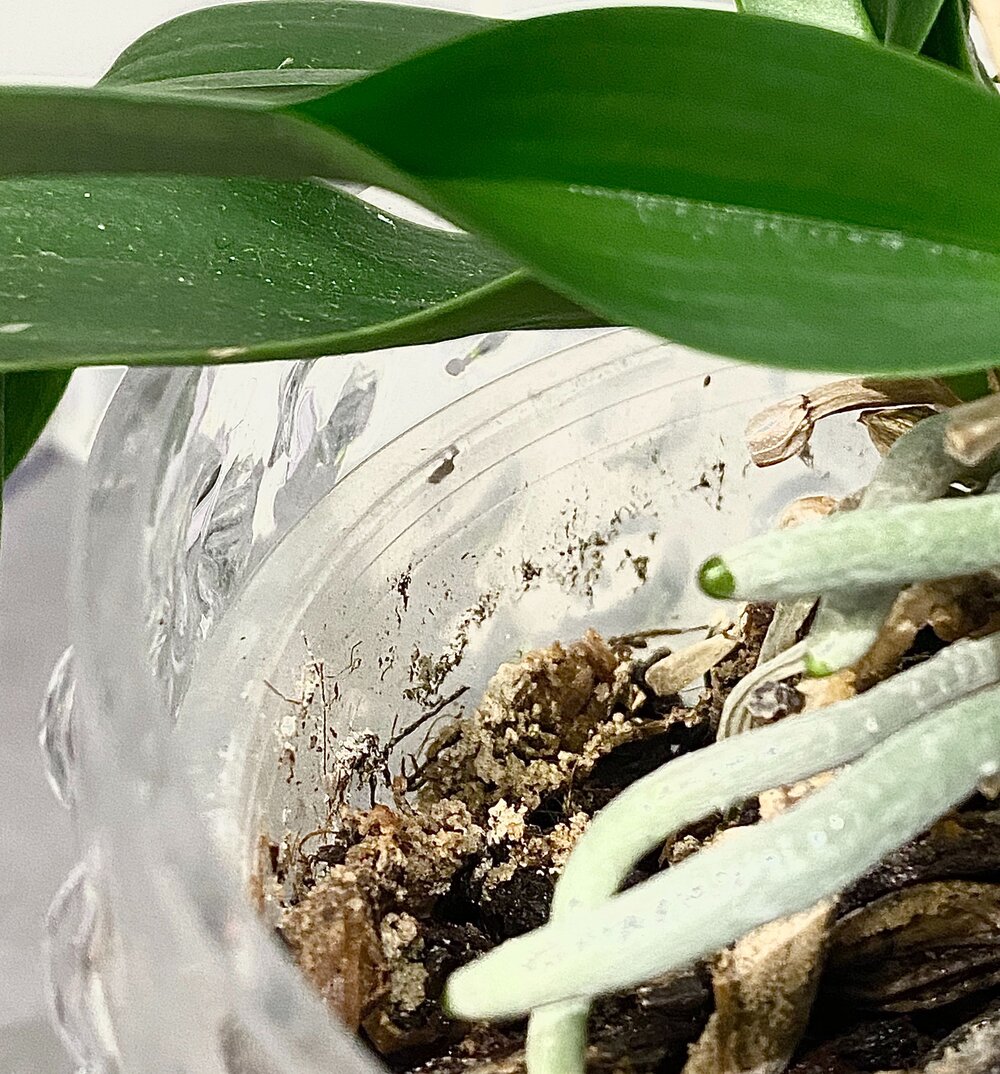Plants can suffer damage as a consequence of over-fertilizing. It's important to keep track of fertilizing and set a schedule and also ensure that your plant's pot has good drainage.
SIGNS OF OVERFERTILIZING
Wilting, droopy leaves or a collapsing plant
Dry leaf edges
Yellow leaves
- Note! The above signs can also be caused by other issues as well
WHAT TO DO NOW
Placing a plant directly in a pot that doesn’t have any drainage holes, can result in the fertilizer accumulating in the soil. Using a pot with drainage holes will allow you to flush excess residue and salts out of the soil as water runs throughout it, preventing harmful buildup.
Fertilizer residue in the soil can also prevent moisture from evaporating or being absorbed by the plant causing root rot. Buildup can also burn the roots of your plant leading to burned tips, discolored leaves, or even your plant collapsing.
To fix it:
Carefully remove from the pot - try to be gentle with the roots
Remove as much old soil from around the roots as possible to get rid of excess moisture/salts
Repot your plant using a pot with drainage holes and a recommended soil for your plant
Cut back on fertilizing for a while - this will give your plant a chance to rest and recover. You can skip the fertilizing tasks in Planta for now
You can find all the info you need about the right soil and how to repot under the Info tab on the plant’s profile page
Remember to register that you repotted your plant in Planta to update the care schedule (Open your plant’s profile and then press on the + button ).
SALT BUILDUP
This can also be a problem with over-fertilized plants. Salt from the fertilizer collects on top of the soil. This can be seen as white, dry dust on the top layer of the soil.

This isn't a huge a problem, but rinsing the soil is still advised to make sure that the roots of your plant are okay and are not getting burnt.
QUESTIONS
HOW CAN I PREVENT THIS IN THE FUTURE? Always make sure you are using pots with proper drainage. If you use decorative plant pots that don’t have drainage holes, try to add some yourself or place a pot with holes into the decorative pot and then remove it when watering. Also make sure to follow Planta’s fertilizing schedule and read the instructions on the fertilizer package thoroughly to make sure you are diluting correctly.
THERE ARE SO MANY DIFFERENT TYPES OF FERTILIZERS, WHICH ONE SHOULD I CHOOSE? We recommend using a liquid fertilizer for your houseplants. Our fertilizing schedule is optimized for this type of fertilizing - which you add to your water when watering. This is, in our opinon, the safest and easiest way to fertilize your plant without risking burning the roots or giving too little fertilizer.